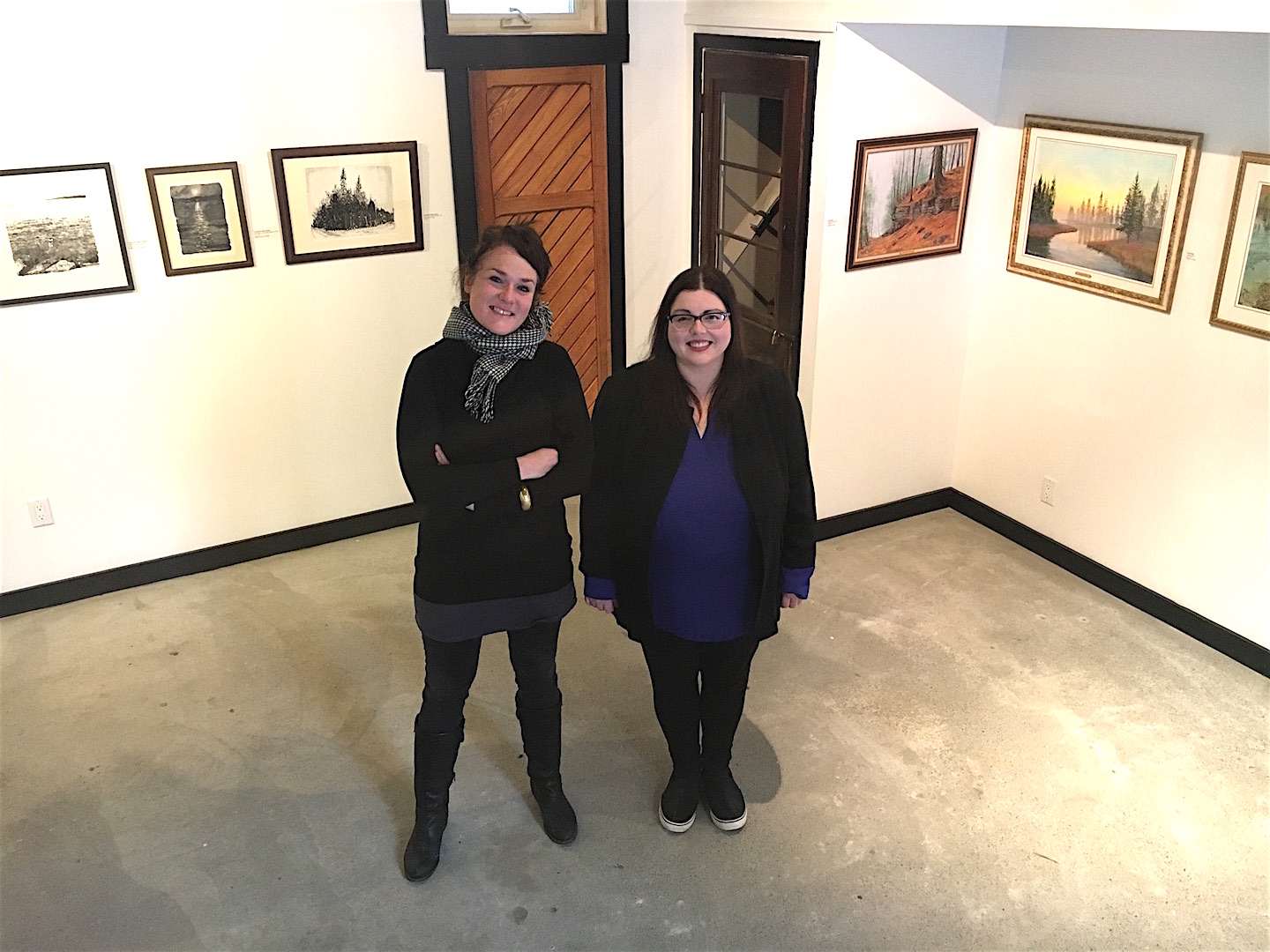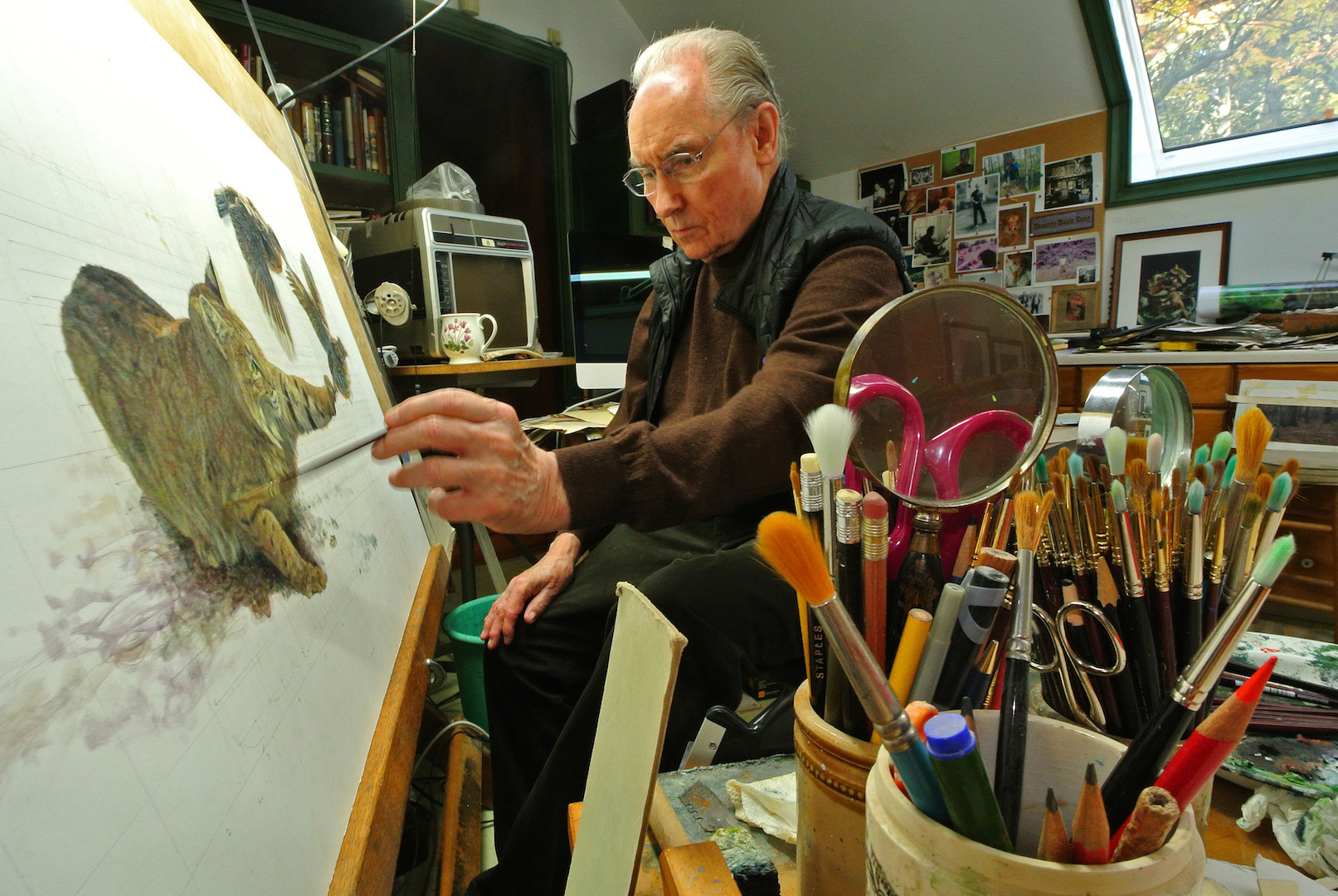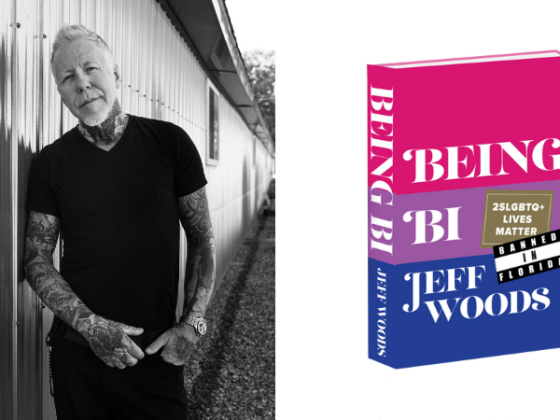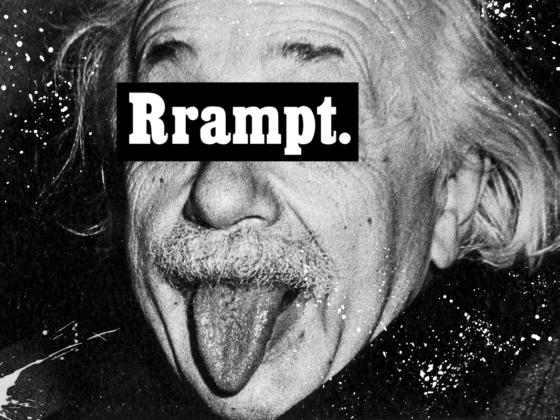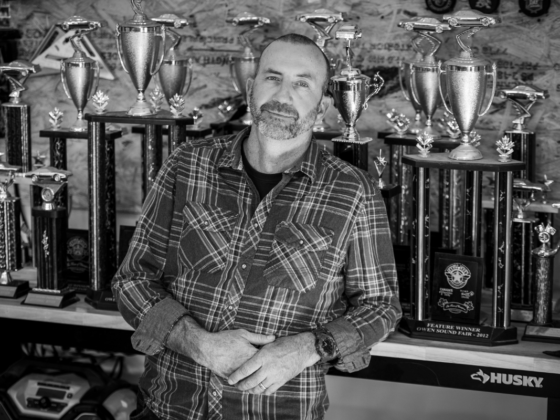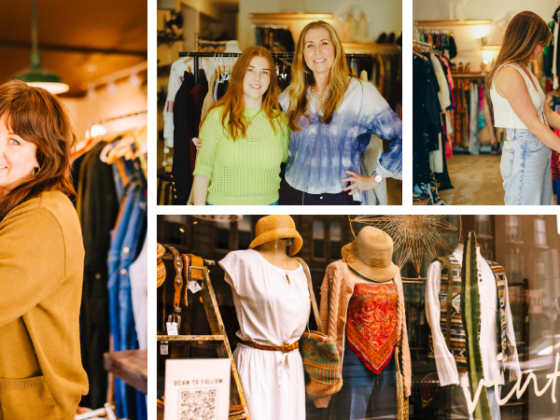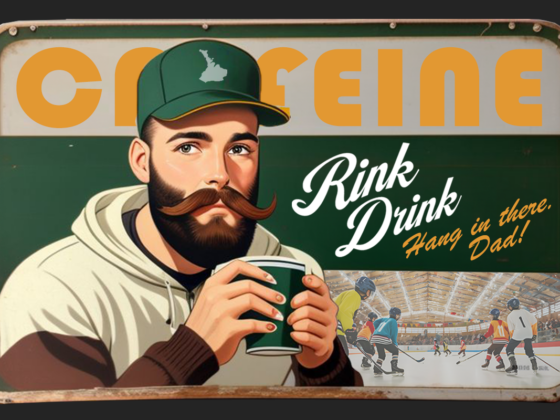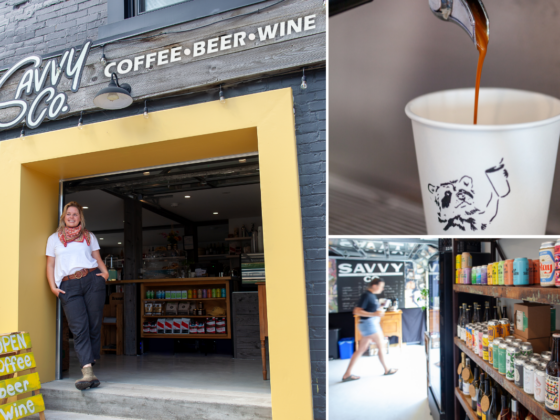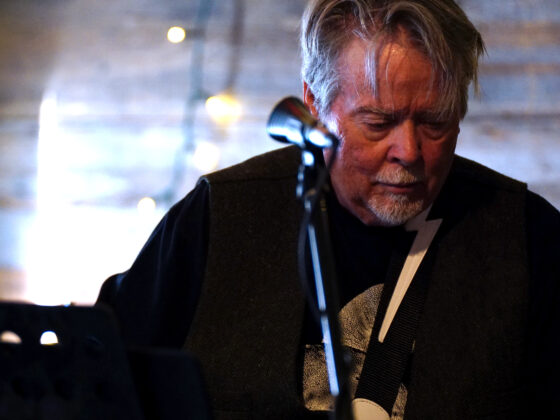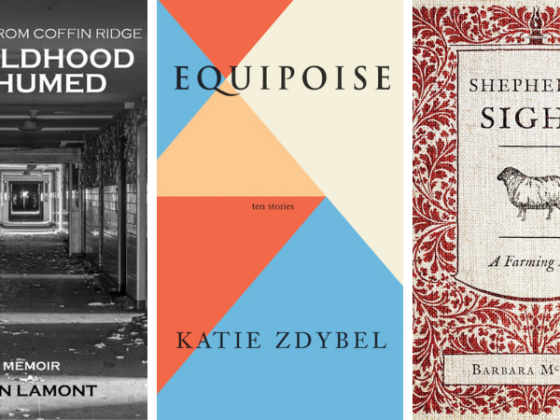There’s a diverse community of artists and makers all across the Grey Bruce and Simcoe region. We know this, some of us may even take it for granted, but for anyone who’s ever worked in economic development, or tourism, or community building, heck for anyone who’s a lover of art, craft, music, theatre, of beautiful adventures, we know this place is magic.
Originally from Toronto, I’ve travelled all over the world, lived abroad in big cities and suburbs, but Big Bay is home. Despite visiting for many years, I couldn’t believe the wealth of artists, makers and musicians I counted as neighbours once I bought my home here. Counting so many local artists as friends, I truly feel truly lucky to witness the beauty that inspires them, and to pick the minds of the makers daily, but enough about me … let’s get to the art, and the artists!
Where to start when broaching the topic of art in Big Bay? Let’s start in Wiarton; this is after all, all about neighbours. Late November 2019 saw the opening of a new gallery space, its’ first show, The Edge of Paradise, featured the paintings of Paul Duff (1928 – 2014) and Big Bay’s own Constance Maconaghie. The brainchild of Ann Marie Hadcock, a Bruce Peninsula veteran and passionate artist herself, the gallery is a Wiarton & District Chamber of Commerce initiative that’s generated plenty of talk in the community already. On the eve of the opening of its’ second show, The Language of Trees, featuring Big Bay artists Christian Bernard Singer and Gary M. Eden, I sat down with Ann Marie, Constance, Christian and Gary to chat all things art in the area.
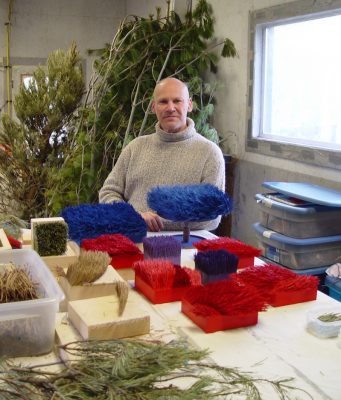
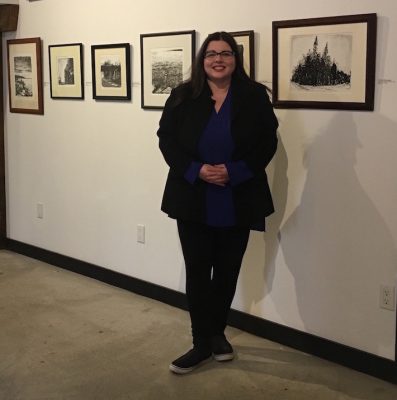
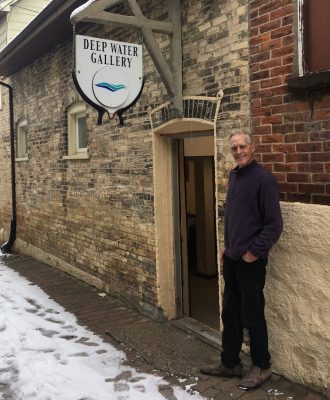
Ann Marie, tell me about Deep Water Gallery.
AMH: The gallery, for me, is a catalyst to bring arts and community together. A space that’s designated for arts, a safe place for the sharing of ideas and stories; a place for artists to meet and collaborate on opportunities and community building. I’d like the gallery to be the beginning of a vibrant arts scene in downtown Wiarton.
That’s quite the vision, why Wiarton and why now?
AMH: Grey/Bruce has so many talented artists and makers living and working in silos, often being forced to venture outside of the area to make a living. Regional art is part of our unique culture. People don’t visit the Bruce Peninsula hoping to see work from Toronto. They want to explore, learn and experience this community. This is why regional art is so important. This is why Deep Water Gallery is so important.
Deep Water Gallery tosses away those old clichés that art can only happen in urban centres. I moved back home from Kitchener-Waterloo five years ago, as the costs of running my studio were too great. To continue on as a professional, I had to make more sustainable choices for my art practice. Most artists that I know are feeling that pinch. Creativity needs time to flourish and you can’t make your best work worrying about rent. My career has remained strong and I’ve been able to take on bigger projects. The work/life balance has been very productive.
I believe that rural arts will become the new oasis for professional artists being pushed from places like Toronto. I firmly believe that there will be some exceptional art made in rural communities and they will become the new art hubs.
Connie, your work was featured in the gallery’s first show, how was the experience?
CM: Exhibiting close to home has been a wonderful experience. Old friends and faces have been on the scene and it’s been a pleasure to discuss my work with the community. I’m interested in capturing time, memory, people I have known, and spaces/places I’ve encountered. I moved to the Grey and Bruce region as a young child, from Toronto, and was struck by the magic and beauty of the area immediately. My recent work reflects a deeper, quieter meaning that can be drawn from the coasts, escarpment and forests of the Bruce Peninsula. My local landscape work is as much a meditation on the silence and beauty of nature in Grey and Bruce as it is a comment on the threat of encroaching noise and crowded conditions in this area. All that to say, the experience has been really amazing, being able to share my work where so much of it has been inspired.
Christian, you’ve exhibited all across North America, how does it feel to have your work showcased in Wiarton for the first time?
CBS: For the last twenty years, I have incorporated moss (both living and dried), pine needles and other organic materials into sculptures and large-scale installations that reference the living energy of the natural world, including my own. Using these materials, creating new work from the natural world, organizing chaos through a contemplatively ritualistic process, it reinforces my connection with nature. Through my process, sorting, ordering and placing the materials with intention, I feel the forest share life-affirming knowledge with me, and, I hope, with those who experience the works as well. Being able to exhibit so close to home, where the work originated – where the materials themselves originated – is a different experience. I’ve said before that I witness in nature the miracle and fragility of my own fleeting life force mirrored back to me. Having arrived to this area just a few short years ago, holding up the mirror in my own community has amplified my awareness of being just one conscious individual within a larger interconnected whole, it’s made me reflect on community and the role of local art here on the Bruce Peninsula, and my part in it.
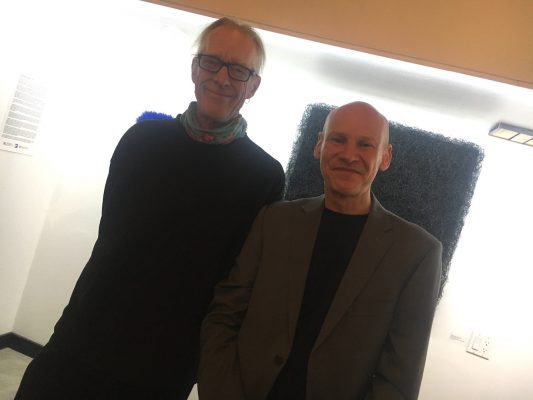
Gary, locals know you as a maker, they come to you for everything from guitar fixing to fresh baked sourdough bread – how does it feel to have your first sculpture show in the area?
GME: Good, in a word! Deep Water Gallery brings a much needed art space to Wiarton. Art should exist in every community. I’ve been exhibiting since 1968, but as you’ve said, this is a first. I’m really excited to have a show so close to home, and with Christian of course as well. This show, The Language of Trees, has been a fantastic way not only to collaborate with a neighbour, friend and of course acclaimed artist, but also to start a discussion on the environment. As we become more aware of the fragility of our planets ecosystem, the future becomes less certain, we’re witnessing huge shifts right now. My recent sculptures consider the preparation of artifacts, which of course are how we consider history. By encasing remnants of trees, in patinated copper, I want to suggest that they are being prepared for long storage, or for transfer to another world, or for protection from severe conditions. By showing these pieces, together with Christian’s pine needle sculptures, we’re hoping to provoke some great conversations with neighbours and the wider community.
The Language of Trees runs until February 16th 2020. For more information on upcoming exhibitions, or to connect with the artists, Deep Water Gallery is on Facebook at https://www.facebook.com/deepwaterwiarton/.
Words and photos by Nicole Egan
Feature image: Constance Maconaghie & Ann Marie Hadcock, inside the Gallery during The Edge of Paradise show

